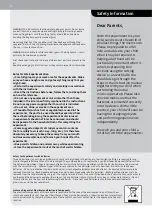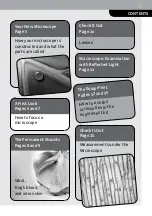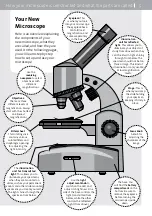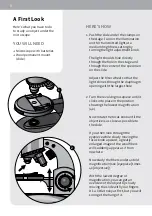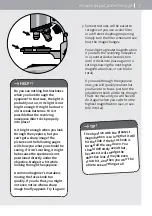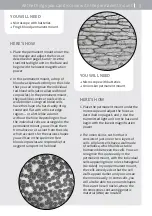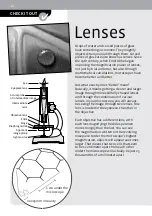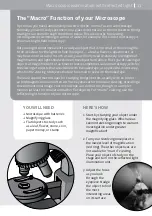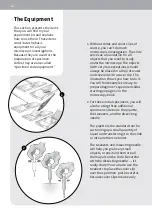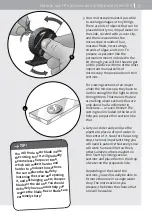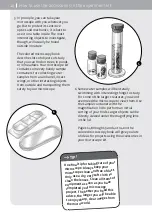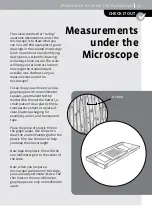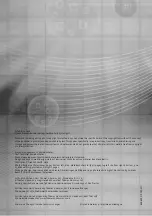
6
A First Look
Here’s what you have to do
to study an object under the
microscope.
YOU WILL NEED
+ Microscope with batteries
+ Wool permanent mount
(slide)
HERE’S HOW
1. Push the slide under the clamps on
the stage. Turn on the illumination
unit for transmitted light at a
medium brightness setting by
turning the light adjustment knob.
The light should shine directly
through the hole in the stage and
through the center of the specimen
on the slide.
Adjust the filter wheel so that the
light shines through the diaphragm
opening with the largest hole.
2. Turn the revolving nosepiece until it
clicks into place in the position
showing the lowest magnification
(4x).
Now rotate the focus knob until the
objective is as close as possible to
the slide.
If you then look through the
eyepiece while slowly moving the
focus knob upward, a greatly-
enlarged image of the wool fibers
will suddenly appear as if from
nowhere.
Now study the fibers under 40-fold
magnification (10x [eyepiece] times
4x [objective]).
With the lowest degree of
magnification, you can get an
overview of the object by slowly
moving the slide with your fingers.
It’s a little tricky at first, but you will
soon get the hang of it.
1
2


